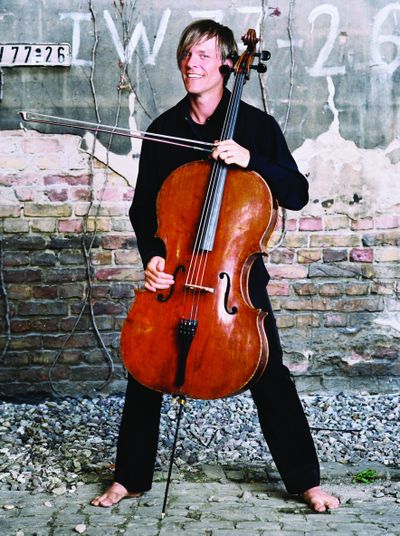Symphony to perform Schumann’s ‘Rhenish’

The Spokane Symphony Orchestra, under the baton of music director Eckart Preu, will perform three works in this weekend’s Classics 9 concert: “The Swan of Tuonela,” Op. 22, No. 2 by Jean Sibelius; Cello Concerto by William Walton, featuring guest cellist Alban Gerhardt; and Symphony No. 3 in E-flat Major, Op. 97 (“Rhenish”) by Robert Schumann (1810-1856).
“The Swan of Tuonela” is one of four tone-poems from “The Lemminkainen Suite (Four Legends from the Kalevala).” The score has this note: “Tuonela, land of death, surrounded by a broad river on whose black and rapidly flowing waters the Swan floats majestically, singing.”
The work, premiered in 1896, features the English horn with a greatly subdivided string section. Flutes, trumpets and clarinets are omitted to darken the orchestral sound.
The Cello Concerto by William Walton was commissioned in 1955 by cellist Gregor Piatigorsky. Its unusual form consists of two moderate songlike movements separated by a fast moving scherzo. The finale, Tema ed Improvizazioni (Theme and Improvisations), allows both the soloist and orchestra to perform “improvisations.”
When asked in an email what he would like the Spokane audience to take away from the Walton Concerto, Gerhardt replied: “This concerto has really gorgeous tunes, absolutely heavenly harmonies, also some technical fireworks and a nice cadenza … I hope people will realize after this performance that there is more to the cello repertoire than the Dvorak, Elgar, Haydn, etc. I am very grateful Eckart Preu has asked me to do the Walton, which is one of my favorites, but far too seldomly performed.”
This is Gerhardt’s third visit to Spokane. He has also commissioned new works for cello to expand the repertoire. When asked about musicians in general Gerhardt remarked: “We know how to read music and play our instruments, but that’s it. All of us musicians, we are just little worms compared to geniuses like Bach, Beethoven, Mozart and even Walton.”
Preu wrote in an email that Gerhardt has performed twice with the symphony during his tenure.
“I liked him right away, with his very natural, human approach to sound and phrasing. I also like that he rarely conforms to the ‘standard’ interpretation. He always comes up with his own solutions to tempos and transitions.”
Schumann wrote his Third Symphony when he was appointed as municipal music director for the city of Dusseldorf, Germany. He wrote the symphony to honor his new home; it is his most programmatic symphony. It is cast in five movements. The third movement is a delightful intermezzo. This movement, as well as the entire work, is one of Schumann’s most accessible for both performers and audience. It is filled with charming tunes and rhythms that indicate the composer was balancing carefully between high and popular art.
Silent for the first three movements, the trombones join forces in the fourth (“Cathedral”) movement in a majestic theme composed to suggest 16th century contrapuntal music. The final movement brings the audience back out into the sun-drenched Rhineland with more short, easy, peasantlike melodies and rhythms to conclude the work.